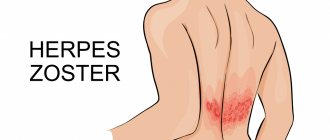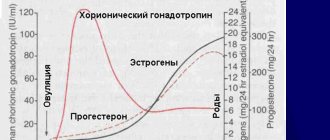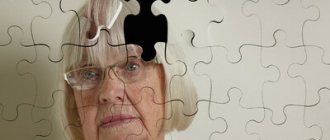From the history of the disease
Since the classic symptoms of chorea are erratic arm movements and an unsteady gait accompanied by dancing movements, it is not surprising that the Greek word chorea, which means “dance,” eventually became the name for this disease.
One of the first doctors to describe this serious illness was Paracelsus (1493-1541). Describing the phenomena of religious ecstasy in the form of the dance of St. Vitus, popular in the Middle Ages and the Renaissance, he discovered people demonstrating severe pathological symptoms. Much later, already in the 17th century, the doctor T. Sydenham described chorea, which appears in childhood and was named in his honor. And only in 1872, D. Huntington (Huntington) described a hereditary form of chorea that debuts in adults. Now this disease is called chorea or Huntington's disease (abbreviated as HD).
In 1993, an international team of genetic researchers discovered a mutation that causes HD.
Main manifestations
Chorea has its characteristic symptoms. And the first thing you should pay attention to is the sweeping movements of the arms and legs, which are not controlled by consciousness. This condition is called choreic hyperkinesis. Upon examination, a decrease in muscle tone can be detected. Grimacing is often noted, which also does not depend on the person’s consciousness. Increased gesticulation may be observed, and the person cannot help but move his hands during a conversation.
Another important diagnostic sign is a lack of coordination of movement. The patient is unable to stand normally, he has disturbances in his gait, and it becomes “dancing.”
When communicating with other people, you can notice many unnecessary movements - sighs, smacking, sniffling and much more. Even in complete rest, a person does not stop twitching his head. All these symptoms can completely disappear during sleep, but after waking up and during emotional stress they all intensify several times.
In addition to the above symptoms, dementia, decreased memory and attention, general anxiety, absent-mindedness, aggressiveness, and handwriting disorders are noted. At the same time, voluntary movements, that is, those controlled by consciousness, are very difficult. Chorea in children has almost the same symptoms, but they are not as severe.
As for the duration of development of pathology, it is always different. For example, rheumatic chorea in children does not appear immediately and proceeds very slowly, and recovery occurs after 1 to 3 months, but the disease can return in the presence of an unfavorable factor. As for such a genetic disease as Huntington's chorea, it lasts from 5 to 10 years and in any case ends in death.
Causes of chorea
We are talking about serious genetic changes: this is the HNT gene, which is responsible for the development of pathology. Its location is the fourth chromosome. It has the ability to encode a special protein called huntingtin. How it works normally is unknown to science, but if it changes due to genetic abnormalities, HD occurs.
As the protein changes its structure, it causes nerve cells in the human brain to begin to function incorrectly and eventually die. Huntingtin is a complex substance, so the course of the disease is complex and multivariate. Modern researchers continue to actively study Huntington's chorea, trying to better understand the specifics of the basic mechanisms of its development.
The mutation that causes chorea is contained in all cells of the patient’s body, so we are talking about a classic hereditary disease.
Etiology and pathogenesis of Huntington's chorea
Huntington's chorea is a hereditary disease with an autosomal dominant pattern of inheritance. Most often observed in men aged 30-50 years, the risk of developing this disease in a child whose parent is sick is more than 50%. The pathogenesis of Huntington's disease is poorly understood, but it is known that the root cause of its occurrence is a gene mutation on the fourth chromosome, as a result of which the synthesis of the huntingtin protein is disrupted and its encoding occurs. The structure of this protein consists of repeating triplets of amino acid chains (cytosine-adenine-guanine); due to gene mutation, the number of triplets increases and the amino acid chain lengthens. The huntingtin protein changes its information by combining with other proteins, and the interaction between them changes. This leads to the death of neurons in one of the parts of the brain, damage to the striatum (“striatum”), as well as the cerebral cortex.
Symptoms of chorea
The time of appearance of the first symptoms of chorea is middle age (period from 35 to 55 years). About 10% of clinical cases of HD occur in childhood and adolescence. In such situations, experts talk about juvenile chorea.
The development of the disease often occurs latently and is unnoticeable at first, so it can be diagnosed late.
The symptoms of chorea are varied. For example, it can manifest itself with a combination of symptoms (the patient’s mood constantly changes and difficulties in thinking arise). The development of symptoms depends on age and severity of the pathology. Some patients demonstrate predominantly motor disorders with mild mental disorders, while others, on the contrary, show anxiety, signs of depression or other mental disorders. The exact time when the first symptoms appear is difficult to determine.
Huntington's chorea symptoms and development of the disease
As a rule, the disease begins to manifest itself in people by the age of 30-35. There are both earlier and later manifestations. The earlier symptoms begin to appear, the faster and more pronounced the development of the disease. The later the clinical picture appears, the milder and longer the course of the disease. In some cases, the first signs of Huntington's disease appear so late that the full development of the clinical picture does not have time to manifest itself during the patient's life. As a result, the patient dies his own death and until the very end does not even suspect that he has this disease. The disease begins gradually. The first manifestations of Huntington's chorea are usually physical disturbances that are not perceived as diseases. A person shows restlessness, fussiness, anxiety and other signs that are not paid much attention to. However, over time, involuntary motor skills increase and become more noticeable. The patient begins to exhibit sudden, involuntary, uncontrolled movements of the limbs. Sometimes convulsive, irregular movements of not only the limbs, but the whole body. Spasms of the facial muscles may also occur and then it seems that the person is grimacing. Often children perceive this as such, that the child is playing around and making faces. Due to involuntary movements of the facial muscles, sometimes patients sob, as if they had been sobbing inconsolably for a long time. Subsequently, articulation and coordination of movements are impaired. It becomes difficult for a person to swallow and speak, slurred speech develops, and uncontrolled movements of the eye muscles begin, which disrupts sleep. Subsequently, a dancing (trochaic) gait develops. Increasing symptoms lead to disability. In some cases, movements become, on the contrary, inhibited. In general, symptoms of an epileptic nature manifest themselves in physical disorders, personality disorder and decreased cognitive abilities. Moreover, the latter usually manifests itself towards the end of the disease, but physical and personality disorders are usually the first to appear. Some people may have physical disorders first, as described above, while others may have personality disorders first. In a more severe form, there may be a simultaneous manifestation of physical and personality disorders. Personality disorders usually begin with the development of depression, alienation, apathy, periodic disinhibition and irritability. Sometimes the first signs of the disease are obsessive states or delusions. In most cases, with this onset, an erroneous diagnosis of schizophrenia is made. Epileptic seizures with Epileptic seizures are quite rare. Impairment of cognitive function usually occurs towards the end, in the very last stages. But early disorders also occur, and even more often, some of the cognitive dysfunctions begin to appear in the early stages. As a rule, this manifests itself as a disturbance in thinking, attention, or a disorder in the control of executive function. But this usually manifests itself in a fairly mild form and progresses very slowly compared to the increase in physical symptoms. Also, at one stage or another, the patient develops an abstract thinking disorder. The patient loses the ability to adequately assess his actions, follow rules or plan his actions. Gradually, the patient develops emotional deficit, panic, aggression and egocentrism. Often, patients begin to develop obsessions, hypersexuality and an increased craving for bad habits (drug addiction, alcoholism, gambling addiction, and so on). There is a problem with recognizing people he knows. To make a correct diagnosis, differential diagnosis of Huntington's disease is very important, especially in the first stages. It is also very important to identify risk groups and diagnose patients before the first symptoms appear. But the most important thing is to diagnose the disease during the period of intrauterine development. This is due to the fact that so far there is no more or less effective treatment for Huntington's disease. Or rather, today there is no treatment at all. And I know even during pregnancy that the child has a mutant gene, parents can decide to continue or terminate such a pregnancy.
Movement disorders
Movement disorders associated with chorea are usually called:
- actually, trochee;
- bradykinesia;
- dystonia.
These symptoms prevent the patient from being in a natural physiological position, disrupting the processes of walking and balance. “Dance” is expressed in involuntary movements that a person cannot control. Bradykinesia manifests itself in the slowness and complexity of voluntary movements, and dystonia manifests itself in the formation of unnatural and awkward poses, accompanied by “twisting” or twitching of the limbs. Also, movement disorders that occur with Huntington's chorea include dysfunction of the eye muscles, problems with swallowing and unclear speech.
Motor disturbances in the manifestations of chorea in adults are characterized by speed, pretentiousness and spontaneity. In this case, any muscle groups can be involved, and control of movements is absolutely impossible.
Usually, the onset of a pathological process is indicated by deviations observed during movements of the facial muscles. Patients grimace, stick out their tongues, raise their cheeks, curl their lips into a “tube,” frown and wink ridiculously. The progression of the pathology is accompanied by the appearance of involuntary movements in other muscles. Patients begin to quickly bend and straighten their fingers, then similar symptoms affect the lower extremities. Sometimes movements occur in the legs and arms at the same time.
Children suffering from chorea, on the contrary, demonstrate sluggish movements. They are very slow, and the child’s speech is slurred, with incorrect pronunciation of sounds and words, impaired speed and rhythm. From the motor sphere, oscillatory movements of the eyeballs are typical. The child cannot normally move his gaze from one object to another and focus his vision on a specific object.
When the disease begins in childhood and adolescence, experts note bradykinesia and muscle stiffness as the main symptoms. Children do not demonstrate violent movements, as with classical chorea in adults. Also, juvenile chorea is characterized by disturbances in behavior and learning with rapid progression of the entire symptom complex.
When the disease begins in a later age, chorea itself is its leading symptom, and its heredity is very easy to identify. Most often, the parents of an adult patient are no longer alive, since they simply do not live to see the moment when their offspring begin to experience severe symptoms of chorea.
Free consultation on training issues
Our consultants are always ready to tell you about all the details!
Diagnostics
If there are symptoms of chorea, a mandatory diagnosis is carried out. Firstly, this is a blood test, which reveals an increased or decreased level of white blood cells. Secondly, this is an analysis for the presence of streptococcal infection, which will help identify C-reactive protein, cyclic citrullinated peptide, and antistreptolysin-O.
An electroencephalogram is required, which shows changes in brain activity. To accurately understand the cause of involuntary movements of the arms and legs, a study such as electromyography is also carried out. If necessary, these tests can be supplemented with computed tomography, MRI and positron emission tomography (PET study).
Mental changes
The psyche in HD undergoes gradual pathological changes. A decrease in a person’s ability to fully think is characterized, first of all, by problems with memory and a decrease in the critical threshold for perceiving one’s own state. The patient becomes anxious, irritable or, conversely, apathetic. In severe cases, hallucinatory or delusional syndromes develop. Suicidal behavior is also common in the context of severe depression.
Also, the following mental symptoms may appear:
- aggressive outbursts;
- insomnia;
- impulsiveness and spontaneity in behavior;
- social alienation.
Delusions and hallucinations are much less common. As for mental disorders, as the disease progresses, patients gradually lose memory acuity, logic and concentration. They find it difficult to make independent decisions and give clear answers to even the simplest questions. Over time, they learn new information worse and worse, which is an obvious sign of progressive dementia.
Prion diseases (PD) are a group of neurodegenerative diseases in humans and animals caused by infectious proteins - prions.
There are 4 known human diseases caused by prions: Creutzfeldt-Jakob disease (CJD), kuru, Hertsmann-Sträussler-Scheinker syndrome (HSS) and fatal insomnia (FI) [3].
The listed diseases can manifest in the form of sporadic, infectious and hereditary forms. The group of acquired PBs includes kuru, registered in one of the tribes of Papua New Guinea, which arose as a result of eating the brains of deceased fellow tribesmen during ritual cannibalism; iatrogenic CJD, which develops due to accidental infection of a patient with prions; as well as a variant of CJD, the occurrence of which is associated with the epizootic of the so-called mad cow disease in England in the 90s of the 20th century, the causative agent of which is a prion. The group of sporadic BE includes idiopathic CJD and FI. Familial CJD, FHNS and familial FI are dominantly inherited PDs that are associated with a mutation in the prion gene (PRNP) located on the short arm of chromosome 20.
The overall annual incidence of sporadic CJD in different regions of the world is almost the same and does not exceed 1.5-2 cases per 1,000,000 population [7]. HSHS is recorded with a frequency of 1 case per 1,000,000 population, only about 100 cases of FI have been described, and kuru occurs in only one small population.
The cause of BE is a pathological prion protein, and its appearance is associated with a somatic mutation of the prion gene (PRNP) or spontaneous conversion of normal prion protein (PrPc) into its pathological form (PrPSc) in sporadic BE, PRNP mutation and PrPSc invasion, respectively, in hereditary and acquired forms this pathology. The accumulation of PrPc is subsequently associated with its ability to transform PrPc into its infectious form due to its (normal protein) conformational (i.e. spatial) changes. PrPSc differs from PrPc in its high resistance to heat, ultraviolet and x-ray irradiation, as well as to protease K. The latter refers to the PrPSc fragment 27-30 (PrPres), and there are three of its types (1, 2A, 2B), associated with a certain phenotype of PD . The prion protein is contagious regardless of its cause.
As a result, most experimental studies have established that the pathogenesis of BE is formed in two stages: extracerebral and cerebral. At the first stage, following intracerebral, intraperitoneal or oral invasion, PrPSc enters the organs of the lymphoreticular system, where it replicates. Subsequent transfer of PrPSc to the central nervous system (CNS) is mediated by the autonomic nervous system. However, some infected lymphocytes and macrophages can penetrate the CNS directly through the blood-brain barrier (BBB). PrPSc can concentrate in chronic foci of inflammation, accompanied by the development of lymphoid follicles in various organs, including secreting ones (liver, kidneys, pancreas, mammary gland, etc.); Moreover, prions were also discovered in the secrets of the latter [8]. At the cerebral stage, the main thing is the disruption of PrPSc degradation in the neuron due to its conformational difference from PrPc and its acquisition of neurotoxic properties.
An important factor determining the variability of the clinical and histological phenotypes of all BEs is the genetic polymorphism of PRNP codon 129, encoding methionine and/or valine, as well as the pathogen strain [5, 9].
Histological examination of the brain in all BEs reveals neuronal death, spongiosis, proliferation of astrocytes, and amyloid plaques.
Sporadic CJD is observed in 90% of all cases of the disease, the remaining 10% are registered as hereditary and acquired. The male to female ratio is 1.5:1. Hereditary predisposition to this form of BE is associated with a genetic polymorphism in the 129th codon of PRNP. The main clinical manifestations of CJD are rapidly progressive multifocal dementia, usually with myoclonus, as well as extrapyramidal, cerebellar and pyramidal disorders. The disease is usually registered in the older age group, its peak occurs at 60-65 years [6]. The average survival time is about 8 months, 90% of patients die within the first year of the disease.
In accordance with literature data and our own research, 5 stages of sporadic CJD can be distinguished:
1. Prodromal stage (asthenia, adynamia, general weakness, dizziness, headache, sleep disturbances, pain in the legs, decreased appetite, weight loss, changes in behavior, attention and memory problems).
2. Stage of first symptoms (rapidly increasing mental disorders, visual and oculomotor disorders, ataxia, dysarthria, stiffness in the legs, tremors in the hands, hallucinations, urination disorders).
3. Advanced stage (dementia, pyramidal-extrapyramidal and cerebellar disorders, myoclonus, dizziness, visual and oculomotor disorders, autonomic disorders, muscle atrophy).
4. Final stage (dementia, akinetic mutism, disorders of consciousness, decerebrate rigidity, myoclonus, concomitant somatic pathology, trophic disorders, central respiratory disorders, which are the cause of death of these patients).
5. Stage of extended life (lack of own breathing - the patient is on mechanical ventilation, apallic syndrome, vegetative status, hyperkinesis, joint contractures, loss of muscle mass, polypathy, cause of death - heart failure over the next few months).
Of all the routine diagnostic methods, only electroencephalography is important.
Changes in the EEG are observed in the advanced stage of the disease in the form of two- or three-phase sharp waves with a frequency of 1-2 per second, which are usually superimposed on a general reduced background of activity (see figure)
.
Figure 1. EEG of a patient with CJD, advanced stage.
In recent years, an atypical protein 14.3.3 has been detected in the cerebrospinal fluid (CSF) of these patients, which is considered to have diagnostic significance [2, 4]. An MRI study of the brain of these patients can detect an increased response from the subcortical nuclei [1]. In the differential diagnosis of CJD, neurological complications of systemic vasculitis, neurosyphilis and cryptococcal meningoencephalitis should be taken into account; a group of diseases manifested by myoclonus epilepsy, mnestic-intellectual disorders and ataxia (mitochondrial encephalomyopathy with ragged red fiber syndrome, sialidosis, Lafora disease, Unverricht-Lundborg disease, neuronal ceroid lipofuscinosis). The initial manifestations of the AIDS-dementia complex may resemble CJD in onset, as can Parkinson's disease, progressive supranuclear palsy, vascular encephalopathy, and a variant of the paraneoplastic process.
Based on the results of morphological studies and biopsy data, 3 stages of the formation of the pathological process in CJD can be distinguished: at the first relatively early stage of the disease, pathological changes, especially spongiosis, are moderately expressed and have a focal limited nature (according to intravital brain biopsy). At the second stage, during the natural course of the disease, changes in the brain are more pronounced and they are diffuse in nature, while individual neurons appear unchanged. At the third stage, related to the extended life of the patient, a therapeutically determined pathomorphosis is observed due to qualitative and quantitative changes in the pathological anatomy of the disease. Spongiform changes in brain tissue extend to the white matter, where axonal breakdown is detected; massive death of neurons is observed, and in the remaining ones lipopigment degeneration occurs.
Sporadic FI debuts between the ages of 25 and 71 years (average 49 years). The duration of the disease is often from 1 to 2 years, but cases have been described when patients died earlier (after 6-7 months) or later (after 30-33 months). The clinical picture reveals insomnia, autonomic and motor disorders, changes in circadian rhythms of hormone secretion. PrPSc with sporadic form of FI is characterized by type 2. A polysomnographic study reveals the absence of a physiological sleep pattern and its cyclic structure disappears. Sympathetic hyperactivity is often observed in the form of high levels of adrenaline and norepinephrine in the blood plasma, an increase in body temperature and blood pressure is noted, while their circadian fluctuations decrease; the latter was also noted in relation to the content of hormones of the hypothalamic-pituitary system [1].
The problem of kuru is now mainly of historical interest, since in connection with the ban on cannibalism in 1956, cases of this disease in the Fora tribe (Papua New Guinea) were recorded less and less often and only in persons born before this ban. At the same time, this circumstance indicates that the incubation period of kuru can be more than 50 years.
All cases of iatrogenic BE are classified as CJD. Accidental transmission of CJD occurs as a consequence of various surgical and medical procedures. Iatrogenic routes of transmission include the use of insufficiently sterilized neurosurgical instruments, transplantation of the dura mater and cornea, and the use of growth hormone or gonadotropin obtained from the pituitary glands of deceased people [11].
With CJD, the age of patients ranges from 16 to 40 years (average 27.6 years). The duration of the disease is on average 13 months. However, sporadic CJD is very rare before the age of 40 years and accounts for only 2%. In the early stages of the disease, mental disturbances, pain or dysesthesia are noted. Later, progressive cerebellar disorders, memory changes and dementia, myoclonus and chorea, pyramidal symptoms, and akinetic mutism appear. MRI studies reveal varying degrees of brain atrophy, as well as increased signal in T2 mode in the posterior parts of the visual thalamus. To diagnose the hereditary variant of CJD, a biopsy of the pharyngeal tonsil is also used, in which PrPSc is detected. All of these patients were homozygous for methionine at codon 129 of PRNP and were also carriers of the PrPSc protein (type 2B). The number of newly ill people is gradually decreasing and in total by 2010 reached 219, and these were mainly residents of the UK. Such patients have not been registered in Russia.
However, there is an opinion that there may be a re-outbreak of the CJD variant. An analogy is drawn with kuru, which can develop even 50 years after participating in cannibal feasts, but it affects individuals homozygous for valine at codon 129, who make up more than 30% of the population.
Currently, more than 30 PRNP mutations are known that cause the development of hereditary PD. However, the phenotypic features of the mutation depend on the polymorphism of codon 129. This codon affects the expression of the mutant gene, leading to different clinical and morphological phenotypes of the disease.
Hereditary CJD is basically identical to sporadic CJD in clinical and morphological parameters. With it, 7 point mutations and 6 insertions have been described.
HNSHS in the population is registered with a frequency of 1 case per 1 million population. The disease begins in the 3rd or 4th decade of life and lasts several years (on average 5 years). Initial symptoms are cerebellar abnormalities; later dementia joins, which sometimes may not manifest itself. In the advanced stage of the disease, cerebellar symptoms predominate, but in some families the leading signs may be extrapyramidal disorders; in others, visual paralysis, deafness and blindness. Characteristic is the absence of tendon reflexes in the legs in the presence of extensor pathological signs. Myoclonus is rare.
To date, 7 point mutations and insertions of PRNP are known in HNSCC [1]. Differential diagnosis of HSSS is carried out with olivopontocerebellar ataxia, hepatocerebral degeneration, multiple sclerosis, familial form of Alzheimer's disease, metachromatic leukodystrophy, Refsum's disease.
Familial FI is clinically and pathologically identical to sporadic FI, but is associated with a mutation in the 178th codon of PRNP. It has also been established that the ratio of PrPrec glycoforms and their structure differ in familial and sporadic FI, and in the latter case these indicators are similar to those in sporadic CJD.
A reliable diagnosis of CJD is established using standard pathological methods and/or in appropriate laboratories using additional methods (PrP immunochemical methods, Western blotting and/or detection of scrapie-associated fibrils). The remaining cases of CJD are treated as probable or possible.
A probable diagnosis of sporadic CJD may occur in the case of progressive dementia, as well as typical EEG changes or disease duration of less than 2 years and a positive test for protein 14.3.3. in the CSF in the presence of two of the following clinical signs: myoclonus, visual or cerebellar disturbances, pyramidal or extrapyramidal disturbances, akinetic mutism. Possible CJD has the same criteria as probable CJD, but with no EEG changes and a negative protein test 14.3.3.
Acquired CJD is registered in the case of progressive cerebellar syndrome in a patient who received tissue extracts containing pituitary hormones, as well as in the presence of a history of risk factors for the disease (for example, during transplantation of the dura mater or cornea).
Diagnosis of a variant of CJD may be possible if 5 of the 6 following clinical syndromes are registered: mental disorders and paresthesia in the early stages of the disease; ataxia; chorea, dystonia or myoclonus; dementia; akinetic mutism. The likelihood of diagnosing variant CJD becomes greater if the following features are present: no potential for iatrogenic effects, no PRNP mutation, no typical EEG, disease onset before age 50, disease duration no more than 6 months, routine studies excluding an alternative diagnosis; MRI examination reveals an enhanced signal in T2 mode from the visual thalamus. In case of death, a pathological examination is necessary.
The familial form of CJD is recorded in cases of a definite or possible diagnosis of CJD plus a definite or possible diagnosis of CJD in a first-degree relative, as well as in cases of neuropsychiatric disorders plus disease-specific PRNP mutations. The diagnosis of HSNS and familial FI is reliable after a pathomorphological examination of the brain, as well as in the case of similar neurological and mental disorders in a close relative in the presence of prion gene mutations specific to these diseases. However, the presence of a family history and PRNP mutation should not be present in the case of sporadic FI.
Kuru can only be diagnosed in the Fora tribe of Papua New Guinea, despite close clinical and pathological similarities to the new variant of CJD.
There is no effective etiological and pathogenetic therapy for BE [10]. In the early stages, symptomatic therapy is used to correct behavioral disorders, sleep disorders and myoclonus (amphetamines, barbiturates, antidepressants, benzodiazepines, antipsychotics); in the later stages, maintenance therapy is used. In order to prevent variant CJD, the use of drugs prepared from cow tissue is limited, the production of pituitary hormones of animal origin is stopped, and preference is given to genetically engineered drugs. A number of countries have introduced restrictions on dural transplantation. In the case of hereditary forms of PD, it is obviously necessary to use genetic counseling methods. Prevention of sporadic CJD, which makes up the bulk of such diseases, has not been developed.
Stages of flow
Dr. A. Scholsen from Georgetown University (USA) proposes five stages of chorea development as a classification:
- early The patient has been diagnosed with Huntington's chorea, but so far his full functions have not been impaired;
- intermediate early. A person is able to work and have normal contact with society, but difficulties in thinking, movement and behavior are already making themselves felt. Patients can still cope with everyday activities and work;
- intermediate late. The patient is no longer able to work, but he still does household chores himself;
- late initial. The patient loses independence, but at home retains a number of functions - subject to the regular participation of other people in his daily life;
- late. Help is needed all the time, including professional care. Note that the late stage of the disease requires a special approach and skills from the people around the patient.
Causes
This disease cannot appear out of nowhere. It has its own reasons, the most common of which is heredity. The most famous Huntington's chorea belongs to this type, but there are several other types that can also be inherited.
Other reasons include:
- Brain injuries.
- Infectious and viral diseases.
- Vascular pathology.
- Decreased immunity.
- Intoxication.
- Metabolic disorders.
- Rheumatism.
- Chronic tonsillitis.
- Cerebral palsy.
- SCV.
In some cases, pregnancy becomes the trigger. However, a healthy woman will not develop such a pathology during pregnancy. It will begin to manifest itself only if the woman suffered minor chorea in childhood. The first signs begin to appear in the first months of pregnancy, after prolonged and frequent sore throats. Often in this case it is necessary to terminate the pregnancy.
The rheumatic form often occurs, which is most often diagnosed in children. It occurs during exacerbation of rheumatism and in the presence of endocarditis, and significant damage to the heart valves occurs.
Forms of the disease
Based on the specifics of symptoms, the following forms of chorea are distinguished:
- hyperkinetic. It is characterized by spontaneous motor acts, which, as noted earlier, are not subject to conscious control. Also, speech disturbances due to hypertonicity of the facial muscles are typical for the hyperkinetic form of chorea. Sometimes patients have convulsions and uncontrolled oculomotor acts during sleep;
- akinetic-rigid. Severe muscle hypertonicity;
- mental. Dementia gradually develops, and the patient's personality undergoes destructive changes.
Psychotic phenomena for the latter form are also a characteristic feature.
Symptoms of the disease
It should be noted that chorea disease does not manifest itself immediately, but the symptoms are difficult to confuse with another disease of the nervous system. As a rule, at the first stage of the disease, a person experiences difficulty in moving, the muscles seem to not obey: it is difficult to stand or raise their arms. The patient is depressed, becomes tearful and irritable. Then an involuntary contraction of the facial muscles is observed: the person grimaces and smacks his lips. In moments of excitement, he begins to slowly wave his arms. Memory noticeably deteriorates. In the later stages, complete or partial dementia is observed, and the person begins to be haunted by paranoid thoughts and obsessions. Suicidal tendencies are observed.
Non-drug treatment
In some cases, patients respond well to non-drug therapy in the form of:
- psychotherapeutic influence;
- exercise therapy;
- classes with a qualified speech therapist;
- breathing exercises;
- occupational therapy.
Regular use of these methods (of course, if the patient’s condition allows) can significantly reduce the intensity of pathological symptoms both physically and mentally. It has been proven that patients’ psycho-emotional background improves, they begin to better control their voluntary movements. Walking becomes more stable, as do swallowing and balance.
Physical exercise is one of the effective ways to slow down the development of movement disorders. There are special exercise therapy programs developed for such patients, which have repeatedly shown their effectiveness.
Drug treatment
Doctors use strong medication treatment in severe cases of chorea. One popular drug is tetrabenazine. It was developed specifically for the treatment of Huntington's chorea as a drug that reduces hyperkinesis.
Antipsychotics and drugs used for Parkinson's disease are also prescribed. The administration of antiparkinsonian drugs improves motor functions, and antipsychotics (for example, haloperidol, chlorpromazine, clozapine, etc.) alleviate the condition of patients with delusional and hallucinatory phenomena. If the patient is depressed, he is prescribed antidepressants; for insomnia, sedatives and sedatives are prescribed.








